Known for its vibrant colors achieved through dyeing with plants and other natural materials sourced from the island, Kumejima Tsumugi is a highly coveted textile by kimono lovers. The use of natural dyes is also a key criterion for its designation as a National Important Intangible Cultural Property in 2004. This time, we’ve explored the dyeing and weaving culture of Kumejima Tsumugi, focusing on its unique dyeing techniques.
Kumejima is rich in natural resources, including abundant spring water. As its name suggests, "kume" (linked to rice in Japanese) reflects the island’s long-standing history of rice cultivation and its self-sufficient lifestyle. The variety of plants used for dyeing contributes to the vibrant array of colors that bring Kumejima Tsumugi to life.
Let’s take a closer look at the plants used to make the natural dyes used in Kumejima Tsumugi.
Plants used in dyeing Kumejima
Guru(Smilax china var. kuru)

The distinctive reddish-brown Kumejima Tsumugi are created using a dye called guru, from the guru plant. This dye is used during the initial stage of mud-dyeing, and through iron mordanting in the mud, the color transforms into a deep brown-black shade. When used for solid colors, a final alum mordanting step gives the fabric a warm, yellowish-brown hue.
To create the dye solution, the plant’s underground stems are chipped into small pieces and boiled. For the kasuri threads (threads bound to resists the dye), the silk threads are first completely dried and then dyed with the hot dye solution.
Guru is a climbing shrub found in sunny areas of pine forests and mountainous regions. Its roots form clusters of tubers underground, making harvesting challenging. When digging up the roots, part of the root system is left in the ground, allowing for regeneration and harvest again after 5–6 years.
Tikachi / Sharinbai (Techigi, Yeddo Hawthorn; Rhaphiolepis umbellata)

Another essential plant for a deep black color is Tikachi. This plant is also used in the mud-dyeing process for Oshima Tsumugi (where it is known as sharinbai or techigi in Amami Oshima).
Tikachi is primarily used during the dyeing stages between mud applications. For kasuri threads, it is dyed before completely drying to prevent the color bleeding underneath the binding threads.
This evergreen tree is found from coastal areas to slightly inland regions. Its bark and other parts are rich in tannins, producing a brownish dye. The plant is chopped into manageable pieces with an axe, then boiled in a pot to create the dye solution.
Yuna(Ohamabo, Coastal Cottonwood, Hibiscus Tiliaceus)

To create the elegant pale gray and silver tones, the tree Yuna is used. This evergreen tree is commonly found along the coasts of the Ogasawara Islands, Yakushima, Tanegashima, and areas further south. To extract its dye, the wood is first burned into charcoal, then mixed with soybean liquid (mame-jiru) and dissolved in water for use.
Yuna has a long history as a dyeing material, with records of its use dating back to the Ryukyu Kingdom era. Today, Kumejima is the only region actively continuing this dyeing tradition.
The process begins by soaking the threads in mame-jiru for 20 minutes. The powdered Yuna charcoal is then filtered through cloth into the dye solution. The threads are dyed evenly at room temperature to avoid uneven coloration. Dyeing at room temperature is extremely uncommon with natural dyes. The process of dyeing and drying is repeated multiple times until the desired grey is acheived.
Kurusa(Horutonoki, Elaeocarpus Sylvestris)

The Kurusa tree is used to create a cool black. This evergreen tree with tannin rich bark is commonly found in forests ranging from lowlands to mountainous areas, grows to a height of about 5 to 10 meters.
The leaves are boiled to produce a dye solution. The threads are dyed, sundried, and dyed again about six times a day. It first turns an egg yolk yellow, and after mud dying turns into a soft beige.
Kurubo(Nakahara Kuroki, Symplocos nakaharae (Hayata) Masam. )

An evergreen sub-tree that grows in mountainous areas. Its bark is used to extract dye, and in Kumejima Tsumugi, it is often boiled together with the bark of Yamamomo (bayberry) to produce yellow to yellow-brown dye.
When dyeing yellow for Kumejima Tsumugi, Yamamumu and Kurubo are mostly used, while Fukugi, frequently seen in other plant-based dyes, is rarely used.
Yamamumu(Yamamomo, Chinese Bayberry, Morella Rubra)

A tall evergreen tree found growing in sunny mountainous areas. The method is the same as the kurobo.
Shija(Itaji, Castanopsis sieboldii)

An evergreen tree that grows widely from lowlands to mountainous areas, its bark can be used for brown or black dyes.
By boiling the trunk bark to create a dye solution and repeating the process of "dyeing → dehydration → sun-drying" about six times in a single day, the following results can be achieved:
For a single color, alum mordanting is applied at the end to produce a reddish-yellow hue.For mud dyeing, iron mordanting with mud results in a greenish yellow-brown shade.
Uji(Satoukibi、Sugarcane)

Kumejima's main agricultural product, sugarcane, also serves as a dye for producing bright green hues. As a perennial grass in the Poaceae family, it grows to a height of about 2 to 4 meters, with characteristic segmented stalks.
By boiling the leaves to create a dye solution and repeating the process of "dyeing → dehydration → sun-drying" about six times in a single day, the fabric takes on a brownish tone, resembling darkened green. Finally, through copper mordanting, it transforms from a dark brownish-green into a vibrant green color.
Fukuji(Fukugi, Garcinia subelliptica, Happiness Tree)

A plant widely used as windbreak and tidal protection forests near coastal residences in southern Japan. Its bark can produce a yellow dye, but in Kumejima Tsumugi, it is often used for layering with indigo to achieve green.
The dye is prepared by boiling the trunk bark, and through the process of "dyeing → dehydration → sun-drying" repeated about six times in a single day, the fabric is dyed yellow. Finally, alum mordanting is applied to fix the yellow color.
Sannin(Getto, Shell Ginger, Alpinia zerumbet,)

A perennial plant commonly found in sunny grasslands, with upright stems that grow in clusters, reaching a height of about 2 to 3 meters. Its stems and leaves are used to extract a pinkish brown dye.
By slicing the root and stem sections into rings and boiling them to create a dye solution, the process of "dyeing → dehydration → sun-drying" is repeated about six times in a single day. Finally, alum mordanting is applied to produce a pinkish hue.
Sotetsu(Sago Palm, Cycas revoluta)

Found in the very south of Kyushu and the Southwest Islands of Japan, this plant grows on rocky areas near the coast. Its leaves can be boiled to extract a pale whitish dye.
By boiling the leaves to prepare the dye and repeating the process of "dyeing → dehydration → sun-drying" about six times in a single day, the fabric takes on a pale tone. Finally, alum mordanting is applied to produce an ivory-like color.
Daichi
Kumejima is also a treasure trove of minerals, with notable examples used as dyes including red clay (akatsuchi) and kucha. Red clay can only be found in one location on Kumejima and is said to have been used for the walls of Shurijo Castle. Kucha is ancient marine mud that surfaced when the islands rose from the sea, and its particles are extremely fine, making it suitable for use in cosmetics.
Daichi-zome (earth dyeing) involves soaking clumps of soil in water for a week to allow impurities to float to the surface, which are then removed. The mixture is stirred, filtered, and used for dyeing at room temperature, with a final alum mordant treatment to fix the color.


The Mud Dyeing of Kumejima
There are three regions in Japan where mud dyeing is practiced: in addition to Kumejima, the most famous is probably Amami Oshima (famous for Honba Oshima Tsumugi) but it is also practiced in Hachijojima (known for Kihachijo). Although all involve mud dyeing, the methods vary depending on the region.
For example, the production of Oshima Tsumugi, the preparation of the threads, the dying, and weaving, are all carried out by different people. In contrast, for Kumejima Tsumugi, where the entire process is carried out by a single artisan, the weavers each take the mud home and dye the fabric themselves.
Collecting mud and dye materials was traditionally men’s work. Today, a local fisherman, Hideo Miyahira, scoops mud from the mud fields and stores it on his boat. He then divides the mud into 10-kilogram bags, making it safe and manageable for the weavers to take home.


Mud Dyeing Steps
There are two methods for mud dyeing Kumejima Tsumugi. The first method produces a reddish-black color with hints of brown using Guru + Tikachi + mud dyeing. The second method creates a bluish-black color with hints of purple using Kurusa + mud dyeing. As a general guideline for the number of dyeing cycles, the former requires Guru 50 times + Tikachi 50 times + mud dyeing, while the latter requires Kurusa 30 times + mud dyeing 3 times to achieve a deep, rich black color.

Roots of the Guru

Tikachi chippings

Skeins of silk thread dyed with Kurusa
The optimal season for mud dyeing Kumejima Tsumugi is from November to December. During this time, the lower humidity allows the threads to dry quickly, and the softened sunlight enhances the color’s durability. It is during this period that the weavers dye enough threads to last for the entire year.
Step 1. Guru
The dyeing process is repeated five times a day for ten days. To enhance the color development, the fabric is sometimes steamed. At this stage, the color appears reddish-brown.

Step. 2 Tekichi
When dyeing the bundle of threads shown in the photo, the process involved seven rounds of dyeing per day, repeated for fourteen days. At this stage, the color becomes a dark brown.

Step 3. Mud Dyeing
After soaking the threads in the mud to ensure the dye penetrates evenly, they are hung to dry in a clean area. Rather than carefully placing the threads, it is said that tossing them lightly helps the mud distribute more evenly without any blotches.
After about one hour, the position of the threads—top and bottom—is switched, and they are left to dry for another hour. Finally, the threads are rinsed with water to remove the mud.


The process of achieving a deep blackish-brown color involves repeatedly alternating between tikachi dyeing and mud mordanting until the desired richness is attained.
Kumejima Tsumugi features a diverse range of dyeing methods, including mud dyeing, plant-based dyeing, and earth dyeing. The official certification for Kumejima Tsumugi includes the name of the weaver and the types of dyes used, reflecting how deeply each bolt of fabric is imbued with the essence of Kumejima’s natural environment.
In future when viewing bolts of fabric, I hope you take the time to compare each one and let your thoughts wander to the beautiful nature of Kumejima that is captured in every piece.
 名古屋帯
名古屋帯
 袋帯
袋帯
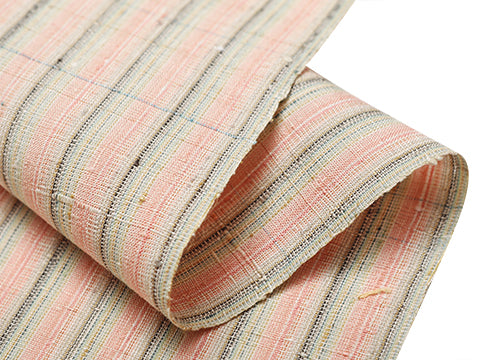 紬・綿・自然布
紬・綿・自然布
 小紋・江戸小紋
小紋・江戸小紋
 訪問着・付下げ・色無地ほか
訪問着・付下げ・色無地ほか
 浴衣・半巾帯
浴衣・半巾帯
 羽織・コート
羽織・コート
 肌着
肌着
 小物
小物
 履物
履物
 書籍
書籍
 長襦袢
長襦袢
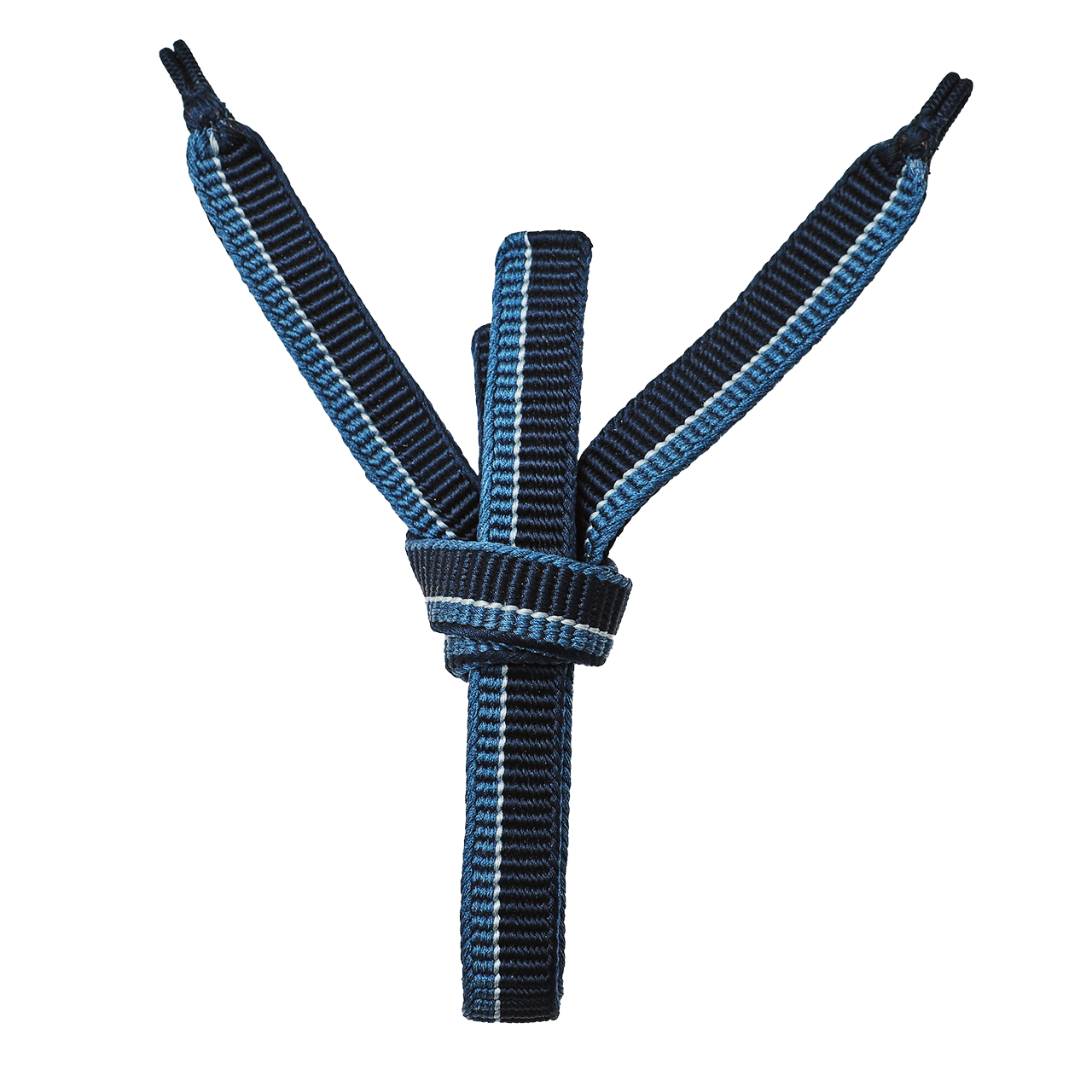 小物
小物
 帯
帯
 お召
お召
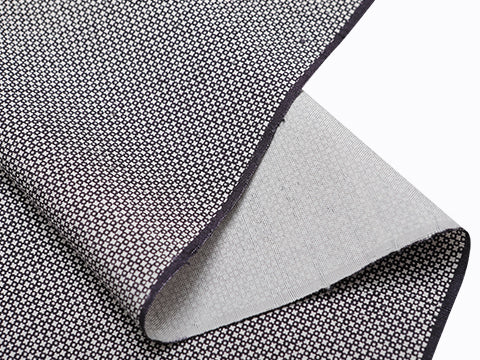 小紋・江戸小紋
小紋・江戸小紋
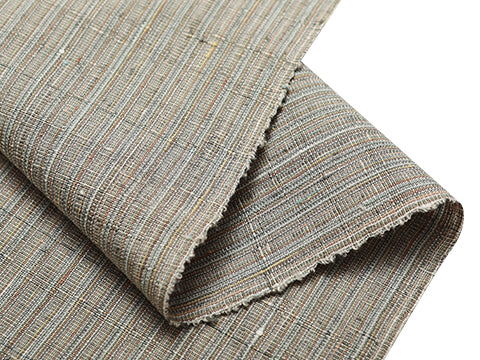 紬・綿・自然布
紬・綿・自然布
 袴
袴
 長襦袢
長襦袢
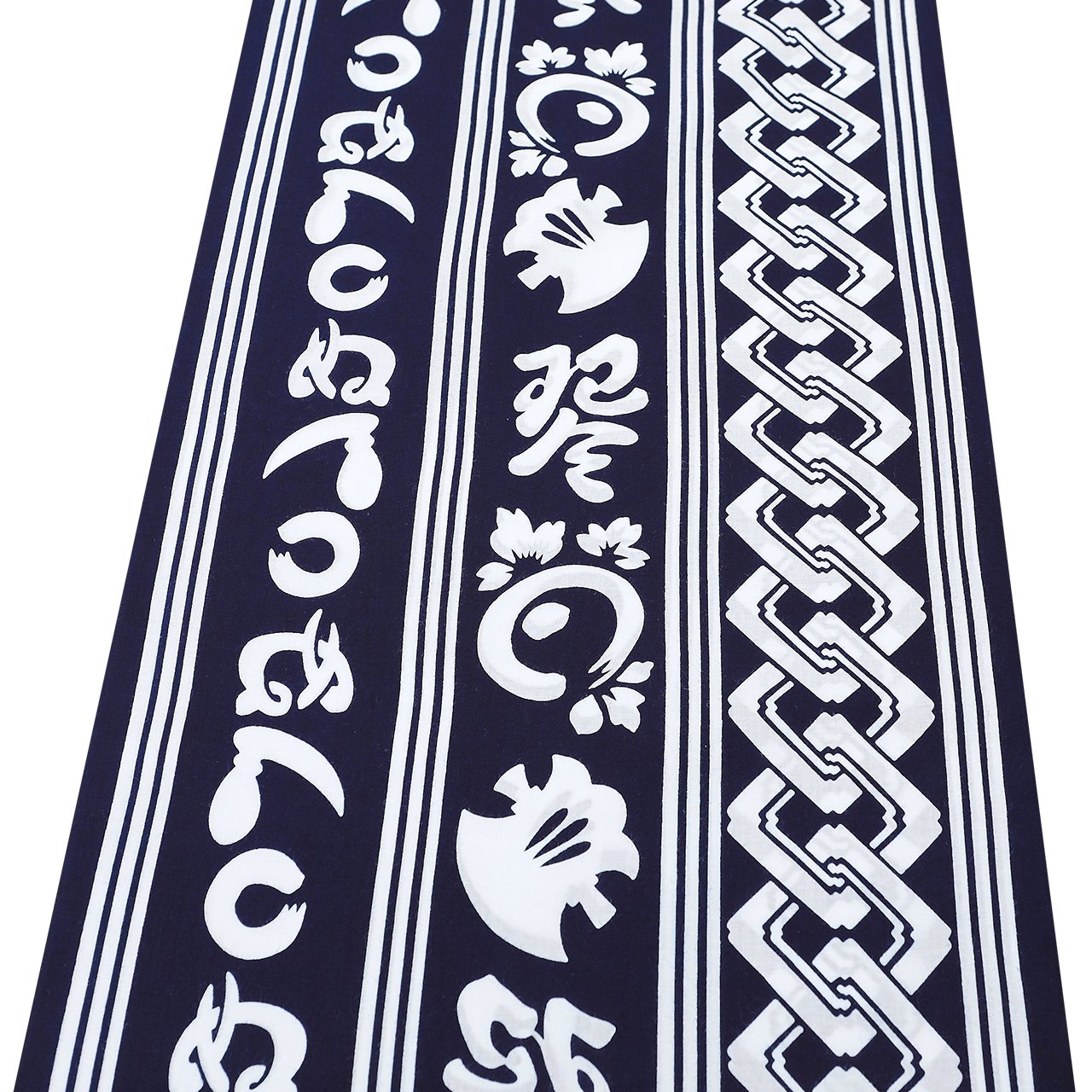 浴衣
浴衣
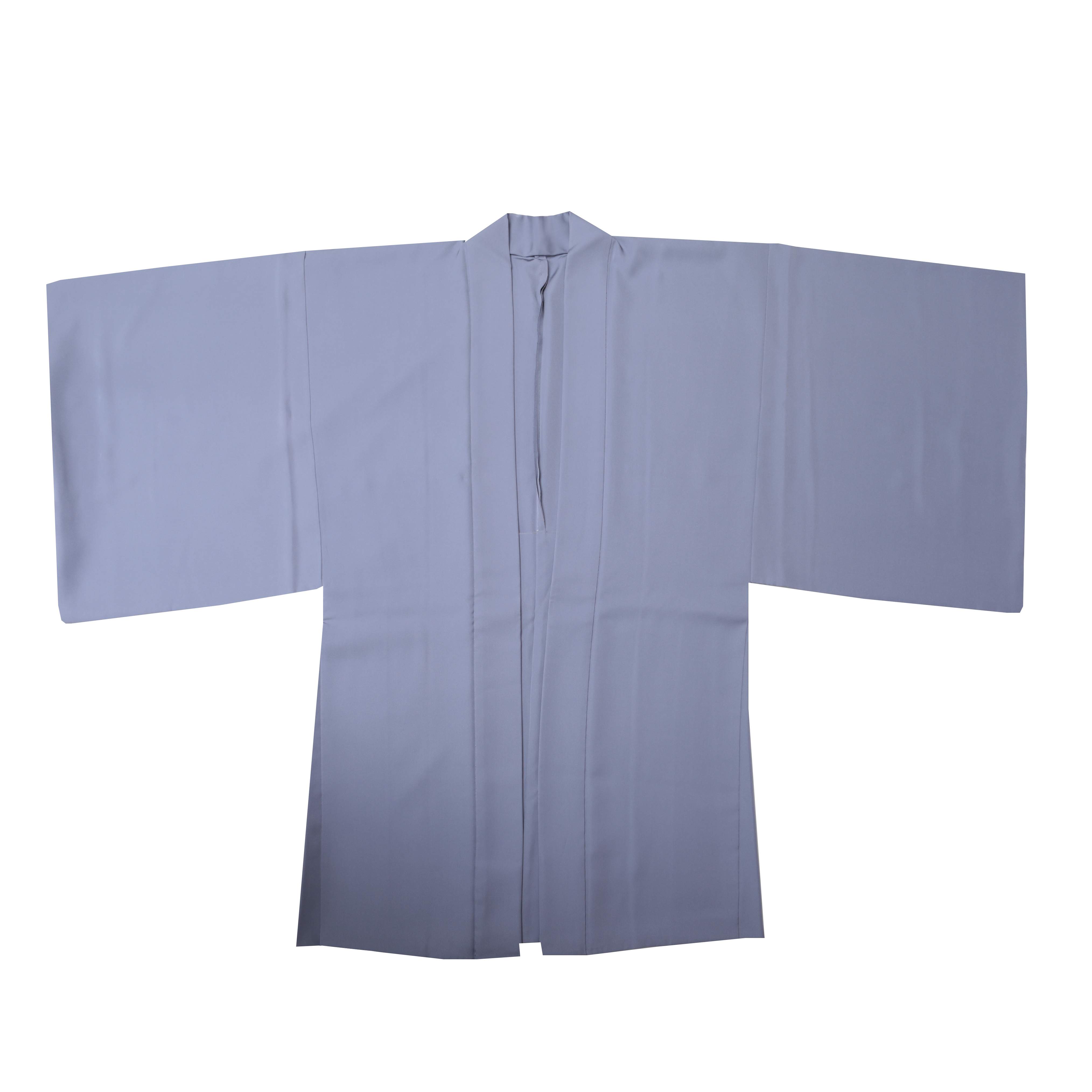 羽織・コート
羽織・コート
 額裏
額裏
 肌着
肌着
 履物
履物
 紋付
紋付
 書籍
書籍
